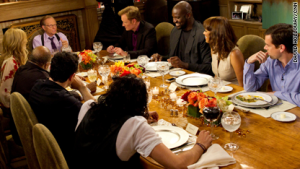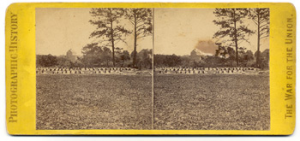Visit msnbc.com for breaking news, world news, and news about the economy
This is a “Before I die…” board. Another ingenious project from Ted Fellow Candy Chang. It is a wonderful, sublime, yet sobering attempt to jolt people from the mundanity of their everyday lives and alienation from place to address a core question, what mark do we want to leave, where do we want to go, what do we want to be before we die?
So we’re socialized to write things on the “Before I die board” like, “I want to win the lottery” or “Travel the world” with no sense of the relationship between these wants that we believe lead us to self actualization and the impact on the earth, other people, etc. The converse way of thinking is that resources are endless but mismanaged or the least realistic thinking is that sustainability is a stupid idea is because God made enough for everyone and we have nothing to worry about.
The other thought I had watching this is how much we have to rethink life and death when we talk about sustainable communities. This is a line of thinking that should be reflected in our individual lives. So much of sustainability is about extending the useful life of materials to avoid exploiting virgin natural resources. See the best illustration of the concept I know:
We’ve gotten closer to the view that we have to use the living “commons” more sustainability with a view toward preserving or extending the useful life of living things. However, we haven’t yet applied it to how we think about our lives after death. We assume that after we die that we aren’t costing people or the earth anything anymore. I would argue, to really think sustainability we have to contemplate the potential negative and positive impact we have after life. Some people, like Larry King think that if you’re rich enough you can live forever:

“Dinner with Kings” – Larry’s going to be frozen
See video here: http://www.nerve.com/news/tv/larry-king-plans-to-livee-forever-by-being-frozen
First, I think we have to admit to ourselves that we all want to live forever, but we just don’t know how. Sure you can go through the principled ways in which you’d reject the offer of living forever, but then you realize that’s not really true. Then once you have accepted that, you can face the degree to which you can metaphorically and actually live forever (or at least for a really long time). You can metaphorically live through your works, a professional legacy or. Or you can live more organically in the earth or through reproducing yourself by having children.
Here’s a better, more equitable alternative…green burials and sustainable death. Burial practices are a manifestation of our distorted unsustainable attitudes toward death and manifest a silent but lethal tragedy of the commons called Earth. Green burial can help prevent 827,060 gallons of embalming fluid, including formaldehyde, 30-plus million board feet of hardwoods, 209 million pounds of steel for caskets and vaults, 3.3 billion pounds of reinforced concrete in those vaults and 5.4 million pounds of copper, lead and bronze to reinforce and decorate the caskets. It may take up to sixty years for an embalmed body in a coffin to decompose. Green burials ensure the burial site remains as natural as possible with Interment of bodies is done in a bio-degradable casket, shroud, or a favorite blanket. No embalming fluid, no concrete vaults. There are exceptions for public health reasons, but 9 times out of ten, green burial is possible, though not always municipally legal or easy to do.
I would argue that we should begin to rethink burial, and death and life transitions and make them more apart of the life cycle of cities, communities, and public spaces. This includes suitable municipal infrastructure with functions and spaces that serve multiple uses. Roofs before gardens, football fields become gardens, potter’s fields become combined parks/historically interpretive sites and cemeteries.
Cemeteries must become living spaces of celebration, life, commemoration, redemption, healing, and even play, of cultural sustainability. This is not exactly a new idea. This was done all the time in the Appalachians and first in North Carolina right after the civil war. Read more about Decoration Days atYale Historian, David Blight’s “The First Decoration Day” article.

Union Burial and Decoration Day at Charleston – First Memorial Day
To formerly enslaved Africans, burial had layered meaning and uses, and this as evident in the Charleston Union Solder Burials in 1865:
The Civil War Was a Tragedy of the Commons, but these former slaves helped redeem the land through burial. Burial and death can be about meaning and reclamation for communities, and this is where cultural and social sustainability are so essential to true self actualization communally and individually. Our ancestors have given us the gift of Memorial Day, but I argue we can have an even more sustainable approach to life after death by expanding the notions and practices around sustainability, decoration, and commemoration in burial spaces. This can also extend to conservation of sacred natural spaces, places that are sacred because of former ownership (plantation or stolen land from indigenous people and slaves) or to avoid a tragedy of the commons in the form of significant buildings or spaces that once had meaning endangered by development. What’s more sustainable than knowing you will one day become a tree, won’t poison the earth and that you will be remembered and felt always.
That to me, is better, more sustainable than being frozen.
Green and Natural Burial Links:
- Natural Burial Cooperative: http://naturalburial.coop/USA/
- Be A Tree: The Natural Burial Guide for Turning Yourself Into a Forest http://www.beatree.com/
- The Infinity Burial Project, TED Presentation: http://blog.ted.com/2011/10/14/my-mushroom-burial-suit-jae-rhim-lee-on-ted-com/
- African American Environmentalist Association,” When it is My Time I want a Green Burial.” http://aaenvironment.blogspot.com/2006/09/when-it-is-time-i-want-green-burial.html
Andrea Roberts
Terry